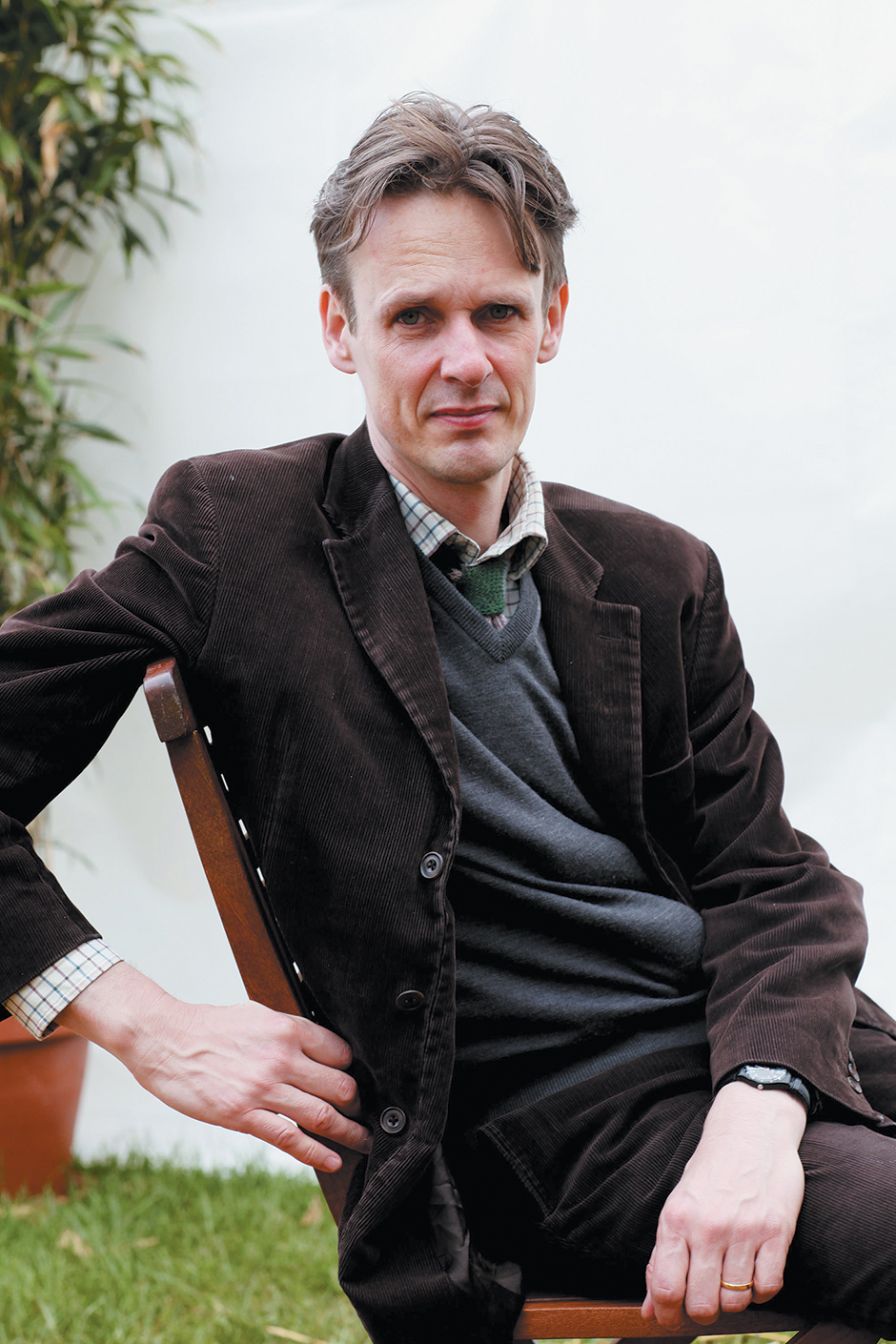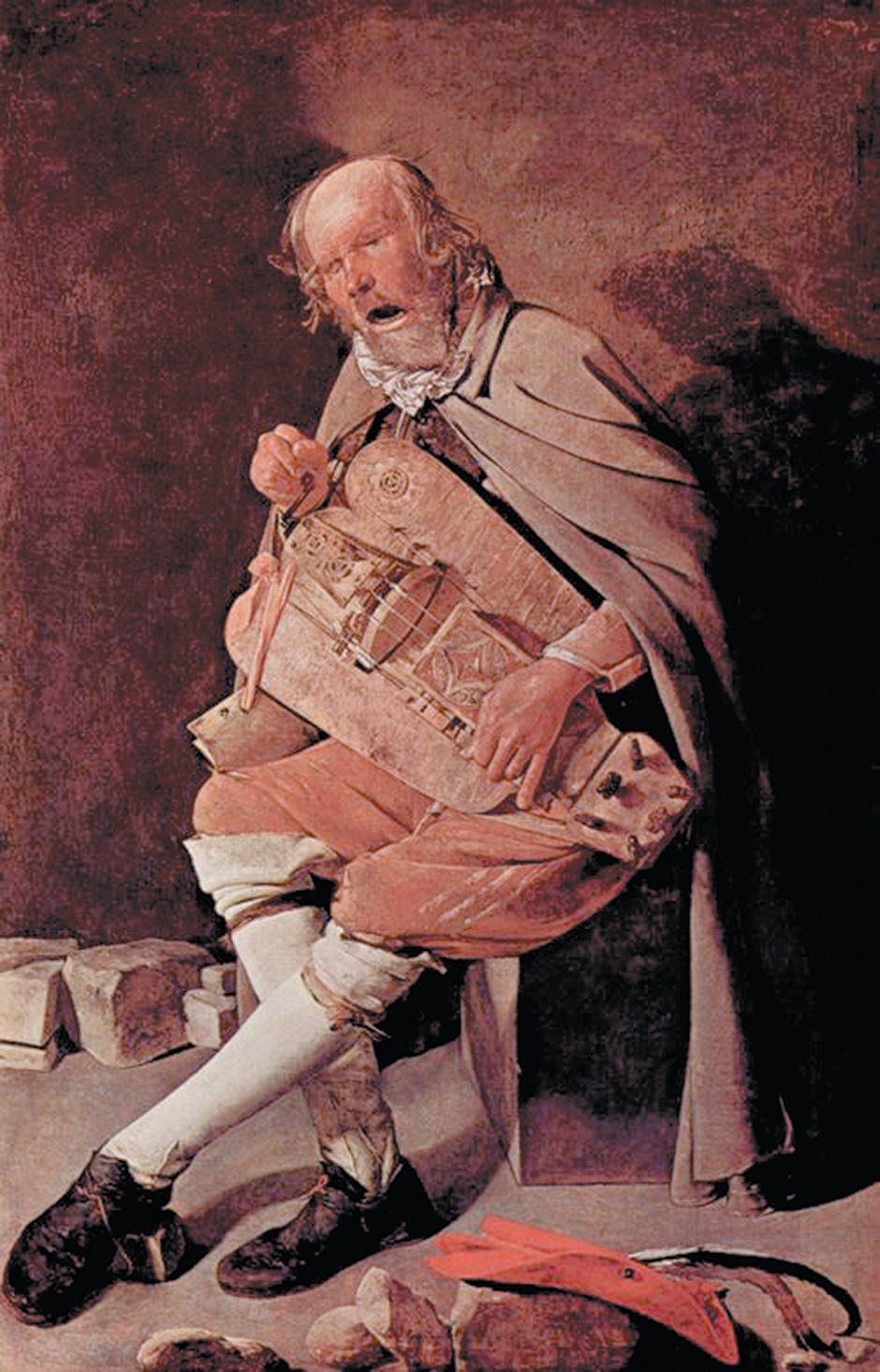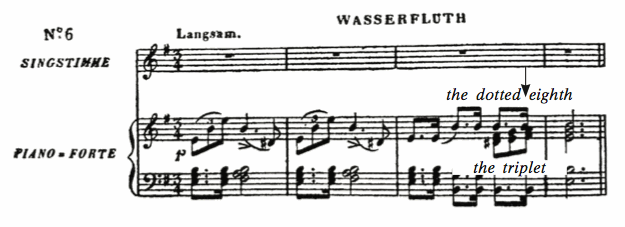Is Schubert, among great composers, the most immediately moving? I would think so. But he was also the most phenomenal in the amount of work he produced. Even next to the prodigious output of Bach and Handel, Haydn and Mozart, Schubert’s accomplishments seem truly inconceivable, considering that he lived for only thirty-one years, and that the quality of many of his works is so remarkable. Already by the age of seventeen he had written some of his greatest songs, while the mounting distinction of his later instrumental works, up to the great String Quintet—his last chamber work—is staggering. In his well over six hundred songs he was able to elevate the genre to its highest level, matching what Haydn accomplished as a grandmaster of the string quartet: the creation of a vast panorama, a kind of comprehensive musical cosmos.
When Schubert was born in 1797, Vienna was the musical capital of Europe. Of the three composers responsible for the city’s preeminence, Mozart was dead, and Haydn had more or less retired; only Beethoven remained active during Schubert’s short life. Though the two composers lived in the same city, they were hardly, if at all, in touch. Both wrote their audacious final chamber music works virtually next door to and independently of one another within a period of little more than three years. In 1827, the year Beethoven died, Schubert had started composing Winterreise, his supreme song cycle.
Arnold Schoenberg, in a text drafted for the centenary of Schubert’s death, expressed his boundless admiration for Schubert’s “originality in every detail next to a crushing figure like Beethoven.” While Schubert was soon recognized as the undisputed master of the lied, his standing as an instrumental composer was slower to develop because of the mistaken notion that he had tried, unsuccessfully, to follow in Beethoven’s footsteps. It was only in the twentieth century that opinion of him gradually freed itself from a range of further prejudices—that he was a mere lyricist and melodist; that his compositions went on for too long; that his style did not develop; or that his untimely death prevented the achievement of true mastery.
To Schubert’s contemporaries, even those of his Vienna circle, much of his output was unknown. Works of paramount importance like the “Unfinished” Symphony and the “Great” Symphony in C Major were unearthed only later, tucked away in the drawers of his brother Ferdinand or of his careless friend Anselm Hüttenbrenner. Only gradually, and posthumously, did his instrumental music take hold among performers and the public, with the piano sonatas the last to be recognized. And only after 1951, when Otto Erich Deutsch produced his Schubert catalog—one of the monumental achievements of musicology—was it possible to investigate the full scope of Schubert’s greatness.
It didn’t help that after the death of the singers Johann Michael Vogl and Carl von Schönstein there was hardly a Viennese Schubert tradition to speak of. The habit of singing in male quartets or choirs petered out before World War I. With the exception of Brahms, who lived in Vienna, all the other contemporary composers who championed Schubert’s music were visitors to the city (and since then few renowned singers, conductors, and pianists have been Austrian).
In his enthralling book on Winterreise, Schubert’s Winter Journey, Ian Bostridge writes that Schubert’s music “was played by most of the great instrumentalists of the day.” There, for once, he is mistaken. Besides the Schuppanzigh Quartet, which premiered his String Quartet in A Minor—and rejected his next, Death and the Maiden, telling Schubert to stick to composing songs—I can think of only Karl Maria von Bocklet, whom Chopin called one of the best pianists in Vienna.
In the years before World War I, Schubert became popular as a kitsch figure, as in Rudolf Hans Bartsch’s novel Schwammerl (Mushroom, a nickname given to Schubert by his friends) or later in the gruesome 1916 operetta Das Dreimäderlhaus (Lilac Time), which gave a fictional account of the composer’s romantic life set to a pastiche of his music. In the film version, called Blossom Time (1934), the famous tenor Richard Tauber, who had started off as a highly praised Mozart singer, dragged Schubert into an abyss of bad taste.
Tauber’s recordings of a selection from Winterreise mark the lowest point of Schubert performance. This is a singing style that may be appropriate to Franz Lehar’s operettas, of which Tauber had become the shining exponent. But even Lehar would have protested against such careless musical approximation. In “Gute Nacht” (Good Night) and “Der Wegweiser” (The Signpost), whole chunks of music are left out. “Der Lindenbaum” (The Linden Tree) is performed without its piano prelude, interlude, and postlude. To make things worse, Tauber’s accompanist, Mischa Spoliansky, plays with a cynical casualness that would embarrass the owner of any self-respecting nightclub.
Advertisement
After World War II, there followed a radical reaction to the rosy Schubert who now had to be relentlessly depressive as well as homosexual. It helps to remember that Schubert was able to write happy and radiant music up to his death—the song “Der Hirt auf dem Felsen” (The Shepherd on the Rock), which ends on a resounding note of joy and optimism, was one of his very last compositions. As Bostridge aptly remarks:
It is undoubtedly true that there is no clear and prescriptive relationship between life and art or art and life. To put it at its most crass, Schubert wrote jolly music when he was gloomy and gloomy music when he was jolly.
Winterreise is not a narrative like Die Schöne Müllerin, the only preceding song cycle in Schubert’s works, but a condition, a state of mind. Who is this very indistinctly presented figure? A pathological case? (Bostridge speaks of “the madness of the wanderer.”) A hysteric? A depressive? To me, he seems to be an alienated melancholic, in a Romantic, Biedermeier mode that draws on Byron and Goethe’s Werther, and a character beset by post-Napoleonic political frustration. Not a madman, but “teetering on the edge of unreason,” at least in the cycle’s final song, “Der Leiermann” (The Hurdy-Gurdy Man).
The absurd, the comical in Winterreise should, in Bostridge’s view, never be resisted. In the song “Der Greise Kopf” (The Old Man’s Head) he even finds a “laughing” triplet figure. There is certainly irony in the Winterreise poems of Wilhelm Müller, whom Heinrich Heine admired; he translated Christopher Marlowe into German, and died, little older than Schubert, in 1827. Reading his poems aloud there are passages where the irony is obvious; they can be spoken very differently from the way Schubert composed them. I can readily understand Winterreise as having a kind of Beckettian absurdity. But is it in Schubert’s music? What I would dispute is that Winterreise is ever comical. It’s the only thing Schubert’s music is not. He belonged for a while to a Viennese club called Unsinnsgesellschaft (Nonsense Society), but his compositions give no hint of this.
Schubert’s close connection with literature was supported by his friends and admirers: poets, composers, painters, amateurs, and state officials who frequently met to recite Goethe and discuss the newest poetry that had appeared in print. The fusion of words and music that Schubert achieved was not merely a result of his unique melodic gifts. His interpretation of the poems gave to the piano part a novel and comprehensive way of revealing atmosphere, the psychology of the singer, and layers of poetic meaning. On the piano, suddenly anything could be expressed.
The introduction of each song presents the basic mood or may crystallize several strands of a poem. The prelude of “Im Dorfe” (In the Village) famously compresses barking, rattling, and snoring in one brief idea, while that of “Der Lindenbaum” combines the murmur of the well, the rustling of the linden tree, and the sweetness of dreams. After Schubert, it became impossible to separate the singing line from the accompaniment. And since Dietrich Fischer-Dieskau, who did more than anyone else to bring Schubert’s lieder to international attention, the accompanist has become a partner. In his thirty recorded performances of Winterreise, several of his piano partners are well-known soloists.
With Schubert’s Winter Journey: Anatomy of an Obsession, Ian Bostridge proves to be one of the most impressive writers among musical performers, as erudite and vivid as he is entertaining. In his words:
Living a piece as complex and resonant as Winterreise means engaging with it in all sorts of ways: understanding what it might mean for us now, as a message in a bottle set afloat in the cultural ocean in 1828. How does it relate to our concerns? How does it connect with us, however unexpectedly?
Bostridge provides answers rich in associations and fascinating digressions, and presents brief seminars on topics that often inform our understanding of text and score. He draws on various disciplines, including history, natural history, physics, literature, and psychology, to mention only a few, and communicates a wealth of detailed information with a rare immediacy. What I miss in this multifaceted volume is an index.
The book has twenty-four chapters, each devoted mainly to one of the cycle’s songs. The chapter on “Die Wetterfahne” (The Weathervane) informs us about marriage contracts in Metternich’s time; “Der Lindenbaum” brings in Thomas Mann’s Magic Mountain; “Auf dem Flusse” (On the River) provides an occasion for a discussion of the five ice ages that includes Frankenstein wandering in an icy landscape. “Rast” (Rest) muses about black and white, police and censorship, and the relationship between art and form; the commentary on “Einsamkeit” (Loneliness) connects, in one of the finest chapters, Byron, Caspar David Friedrich, Rousseau, and Wilhelm Müller. “Der Wegweiser” informs us with admirable lucidity about Schubert’s failing health; “Das Wirtshaus” (The Inn) deals with Schubert and religion; and “Die Nebensonnen” (The Mock Suns) surprises us with an explanation of phantom suns. In a piece on tears and crying, we learn that “the tears shed in emotion contain twenty to twenty-five percent more protein than those produced when chopping onions.”
Advertisement
For the final song, “Der Leiermann,” Bostridge invokes Bob Dylan: “It’s not a million miles from his jingle-jangle to Schubert’s hurdy-gurdy.” Yes, but let’s settle for a few thousand. If this is a song that should be spoken rather than sung, as Bostridge writes, artists like Lotte Lehmann and Peter Anders, who recorded Winterreise in the 1940s, could teach many a singer today how to speak.
Schubert’s Winter Journey is aimed at a wide audience. It avoids musicological jargon, explains technical terms, and translates all quotes from foreign languages. The book is greatly enhanced by the discerning choice of its illustrations. Never has the juxtaposition of Schubert and Caspar David Friedrich seemed more pertinent. The inclusion of Georges de La Tour’s Hurdy-Gurdy Player is as inspired as the wit that uses Albrecht Dürer’s Six Studies of Pillows with “Im Dorfe” (where pillows are mentioned just once), as well as the depiction of the nine positions of waltzing that illuminates “Täuschung” (Delusion) (“a light dances in front of me”). We are also told that “ten to eleven thousand deaths occurred annually in Vienna. The cause of death for about one-fourth of these is consumption which can be brought on by immoderate waltzing”—a matter of ballroom dust damaging the lungs.
There is, however, one point with which I heartily disagree. In his chapter on “Wasserflut” (The Flood), Bostridge’s focus is on the rhythm of this song, for once depriving the reader of fascinating ruminations on the psychological roots of fatigue or the physiological causes of limping. Where I disagree is on a question of how to play a specific phrase that occurs throughout the song—a triplet and a dotted eighth note followed by a sixteenth note. Bostridge argues for a polyrhythmic interpretation, that is, that the sixteenth note should be played after the final note of the triplet. I, on the other hand, maintain that the sixteenth note and the final note of the triplet should be played simultaneously as a “dotted triplet,” which is called triplet assimilation. (I am most grateful to Bostridge for the utterly civilized way in which he conducts this argument.)
As I see it, this issue is a matter not of opinion or taste but of fact. Both the autograph and the first printing that Schubert corrected make it very clear that assimilation is called for. No composer in his right mind would have written down the final sixteenth note of the right hand in bars 3, 17, and 45 as Schubert did if polyrhythm was intended: he would have written the note after the chord. (In Bostridge’s book, regrettably, only the first bar of the autograph is reproduced.)
Why has this question resulted in so much confusion? Part of the blame goes to the printed editions. Max Friedländer’s creditable one, probably the most frequently used for many years, prints the sixteenth note after the triplet. Even the edition graced with Fischer-Dieskau’s name, while trying to be accurate and generally having sixteenth notes underneath the last triplet note, misplaces the last sixteenth note of bar 3. And the new Bärenreiter edition makes the same mistake, though it rightly mentions in a footnote that, as the sources suggest, adjustment of the rhythm is advisable. Rhythm is also a visual matter: the notation should help the player to grasp it at once with his eyes.
Gerald Moore, the celebrated accompanist, stated categorically that the rhythm of “Wasserflut” “should be played as it looks on the score.” The question is: on which score? If it is the manuscript and the first printing that are consulted, I am delighted to agree. Unfortunately these sources have for a long time hardly been considered. Among the performers of the past, Julius Patzak with Jörg Demus, Peter Schreier with Sviatoslav Richter, and Peter Pears with Benjamin Britten are the conscientious exceptions. On their recordings they render the rhythm properly, as did Fischer-Dieskau and Matthias Goerne in all the performances I shared with them.
But there is, besides the philological evidence, a further reason for disagreement. The musical result of adjustment sounds to me much superior to the fanciful notion of the “dragging effect given verisimilitude to the picture of the tired wanderer half blinded by tears” (Gerald Moore). Here, as in several other instances of Schubert’s music, the simpler rhythmic solution is the natural, and Schubertian, one.
And what about Beethoven? some musicians will ask. Look at his so-called “Moonlight” Sonata: surely, in its first movement, the upper voice should not be adjusted to the continuous triplet rhythm. No, it shouldn’t. But then, Beethoven already used a modern and literal notation while Schubert, another pupil of Salieri, still clung to practices derived from the Baroque, and not just in his triplet notation, but also in countless suspended notes, so-called appoggiaturas, that had been thankfully unraveled in Friedländer’s edition. In his comments on the playing of Beethoven’s piano works, the composer’s pupil Carl Czerny warns of adjustment in Op. 27 no. 2—which suggests that it was still practiced by many.
Now there may be those who say that one could decide to go against the letter of the text for the purported gain of a rhythmical structure that sounds more adventurous. Bostridge writes: “The score is of course more than a mere recipe, and it provides a necessary and containing discipline for performers, something to kick against.” I prefer to work with Schubert’s score, not against it.
In defense of the unnamed critical listener who, during “Wasserflut,” irked Bostridge by turning to his neighbor, I should say that I, as a soloist, always avoided recognizing fellow musicians in the audience. As a singer, I would have followed Karajan’s example and sung with my eyes shut. However, I cannot but admire Bostridge’s ability, while trying to move his listeners, to make out not only three different musicians in the audience but also their precise locations (rows H and I).
It took a long time for cyclical works of music to be performed as an entity. Julius Stockhausen seems to have been the first to sing the whole of Winterreise in public in 1860, whereas Clara Schumann still left out pieces in Schumann’s cyclical piano works or performed selected numbers from the song cycles. Ferruccio Busoni may have been the first to present Chopin’s Preludes and Etudes in their entirety. Today, we hear Winterreise complete and uninterrupted unless singers like Ian Bostridge decide to occasionally program only the first twelve songs, a cycle in itself that was written and published before the dozen to follow.
I have heard the Winterreise presented straightforwardly or whimsically, tragically or laconically, calm or frenzied, old or young (the miller’s apprentice in Die Schöne Müllerin is definitely younger), poised or deranged, fast or very slow indeed (Richter with Schreier), sung by higher or lower voices, male or female, offered as cantabile singing or quasi-spoken. The fact is that Schubert, apart from a few rare dynamic indications, doesn’t grant any markings to the singer—they are all to be found in the piano part. Slurs are only written down when a syllable is sung on more than one note.
That means that the singer has to make a lot of decisions, instinctive decisions mostly, about how to let the notes follow each other, where to sing quasi-legato, and where to connect two notes by portamento (sliding up or down), a practice that can sound utterly natural if applied in the right places with the right conviction. (Listen to Lotte Lehmann.) He or she will also decide, whether consciously or unconsciously, how to sing long notes, how to color the words with vowels open or closed, dark or luminous, and which consonants to stress for expression and distinctiveness. There are the prerequisites: a captivating quality of voice; the mastery and beauty of singing; the feeling for musical connections—from note to note, harmony to harmony, phrase to phrase; the range of feeling; the unity of words and music (never at the expense of the words); the plasticity of diction.
Among performers of the Winterreise the Austrian tenor Julius Patzak, who never needed to have singing lessons in his life, stands out in my memory not only because his was the first Winterreise I ever attended (in 1964; Patzak was sixty-six years old) but because he had an unforgettable way of giving color to words like Schnee: shining white. His “Lindenbaum” was the most moving by being utterly simple.
Winterreise doesn’t need updating, embellishing, transcribing, or paraphrasing. There have been numerous attempts to film it or bring it on stage. I remember Peter Pears on TV tucked in a heavy winter coat and braving the snow, or another singer who was made to fly through the air like a crow. There has also been a performance on the viola in which the lack of words made for a gaping void even for musical viewers who didn’t know German. According to Bostridge:
The imaginative space that a singer creates enhances the performance of song. The audience has no set up props to engage with—only the music, the instrument, the bodies of the performers, the face of the singer.
Ian Bostridge’s book is brilliant and unique. After reading it, we may listen differently to this supreme work of art, one that, despite being tainted by death, makes life worth living.






